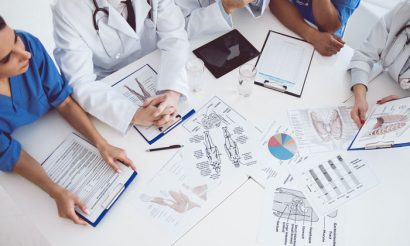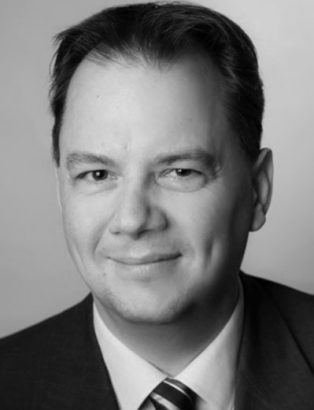Alliance management organisational development: A Bayer perspective
Posted: 4 April 2017 | | No comments yet
Ahead of the 7th Annual Strategic Alliance Management for Pharma conference, we spoke with Bayer’s Christoph Huwe about the organisational development of alliance management…


The pharmaceutical industry has entered in a challenging and tremendous time for reinventing its business model and partnering has become one of the most efficient and powerful ways of reaching new steps in the whole drug development process toward patient needs, once the alliance is fully leveraged.
Ahead of the 7th Annual Strategic Alliance Management for Pharma conference, we spoke with Christoph Huwe, Strategic Alliance Manager Therapeutics at Bayer Pharmaceuticals, Global External Innovation & Alliances about the organisational development of alliance management.
What are, in your opinion, the pros and cons of a centralised vs decentralised alliance management?
I actually believe there are pros and cons to both approaches, and that the answer depends a lot on the size and complexity of your organisation.
A centralised alliance management function certainly makes it easier to develop and maintain quality standards and to exchange best practices on a continuous basis. This is clearly more challenging in a decentralised set-up. At the same time I would consider it impractical, or at least not optimal, to try and manage alliances in very different fields; such as early research vs late development, or pharmaceuticals vs crop science, from within one single team.
I believe that while the alliance manager’s role is not to get deeply involved in technical questions, it is certainly beneficial to have a solid understanding of the processes, culture and value drivers of the organisation you are looking after. Accordingly, at Bayer we have decided to build alliance management core groups in several parts of our business, e.g., in the pharmaceuticals business we have an alliance management group in research and early development, but also a group in late development.
Of course in a set-up like this it is important to still utilise potential synergies between the alliance management teams. In our organisation, the link between these different groups is made via Bayer’s Alliance Community Excellence Team, who is continuously working to ensure that we are learning from each other; share trainings and best practices, and benefit from contacts and insights the other groups might have in key innovation regions of the world.
Can you tell me what are the best practices and challenges when building an alliance management function?
One point that I would like to mention here is that of the optimal location of a given alliance manager.
There seems to be a broad consensus in the alliance management community that the majority of effort of alliance managers across all industries is spent on their own organisations, dealing with internal alignment, budget, portfolio management, legal issues etc. This suggests that it might be beneficial for an alliance manager to be located close to the part of their own organisation where the work within the alliance is done; especially since the alliance manager of the partner organisation is taking care of their own organisation and the report between the alliance managers is usually very good.
However, at the same time it’s important to gain an understanding of the culture and value drivers of your partner’s organisation. It might be a different type of organisation and located in a different region of the world. One could also argue that this might be easier to accomplish if the alliance manager is located close to the partner, at least for a certain amount of time in the starting phase of an alliance, while still maintaining a close connection to their own organisation.


In Bayer’s Global External Innovation and Alliance group, in charge of research and early development alliances, we have agreed to decide this question on a case-to-case basis. Taking into consideration the partners, sites, and persons involved, whilst making the best use of our Innovation Centers located in the US (west and east coast), Japan, China and Singapore. So far we have had good experiences with this rather flexible and adaptive approach.
How can the interfaces between multiple alliance management groups be managed best?
We have looked at this quite a bit as part of our Alliance Community Excellence effort. Somewhat surprisingly, there aren’t that many interfaces in daily business; at least based on our set-up that I have already described. For example, we are of course handing over programs from research and early development to late development, but there is virtually no real interface between pharmaceuticals and crop science alliance management. However, we still stay in close and regular contact within the Bayer alliance community mentioned earlier.
What kind of strategies must be implemented in order to enhance the organisation’s alliance maturity level?
I think the first step to be made is to make an honest analysis of where you are and a discussion of where you want to be as an organisation at the end of the process. Not every organisation will focus completely on partnering and there are good reasons why the need for internal excellence shouldn’t be underestimated. Also in this context, the organisation doesn’t necessarily have to be the whole company or institution, but rather just the part you are looking after. It is not unlikely that different parts of the whole organisation have different alliance management maturity levels and desired target states. Once the gaps are clear, I would suggest focusing on quick wins first, i.e., measures that will help get the organisation closer to the desired target state quickly and with limited effort. Of course, both the current maturity level and the desired target level might change over time, so this analysis needs to be repeated on a regular basis. After all, it’s really a continuous journey rather than a single effort.
What would you like to achieve by attending the 7th Annual Strategic Alliance Management for Pharma conference?
To me, the conference continues to be an excellent opportunity to exchange thoughts regarding current issues and developments in alliance management, and the premier event in Europe focused on alliances in the biopharmaceutical industry.
Accordingly, my goal will be to learn more about the views of the alliance management community represented at the event regarding the topics I will be speaking about in my presentation and covered by the panel discussion I will be participating in.
Christoph Huwe


The 7th Annual Strategic Alliance Management for Pharma Conference will take place from the 24th until the 26th of April 2017 in London, UK.







